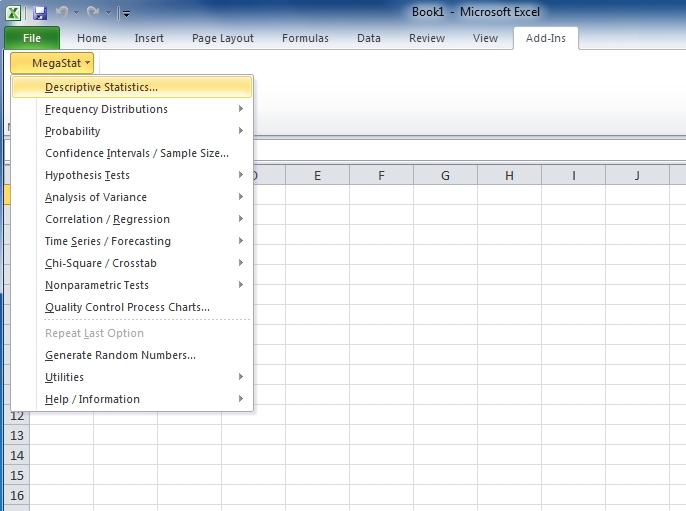
With the ranks established, we can now use the Excel CORREL function to get Spearman's rho: To rank the second variable (blood pressure), put the following formula in cell E2 and copy it down the column:įor the formulas to work correctly, please be sure to lock the ranges with absolute cell references.Īt this point, your source data should look similar to this: To rank the first variable (physical activity), enter the below formula in D2 and then drag it down to D11: This can be quickly done by using the Excel RANK.AVG function. To find the Spearman correlation coefficient in Excel, perform these steps:īecause the Spearman correlation evaluates the associations between two variables based on their ranks, you need to rank your source data. In column B, we have the number of minutes that 10 men of the same age spend daily in a gym, and in column C, we have their systolic blood pressure. By manipulating Excel a bit, we can come up with a much simpler way to do Spearman correlation.Īs an example, let's try to find out if our physical activity has any relation to our blood pressure. However, that does not mean you will have to rack your brain with the above formulas. Regrettably, Excel does not have an inbuilt function for calculating the Spearman rank correlation coefficient.
HOW TO DOWNLOAD MEGASTAT EXCEL HOW TO
How to calculate Spearman correlation in Excel with CORREL function R(x) and R(y) are the ranks of the x and y variables.
HOW TO DOWNLOAD MEGASTAT EXCEL FULL VERSION
To deal with tied ranks, the full version of Spearman correlation formula has to be used, which is a slightly modified version of Pearson's r:


Spearman Rank Correlation evaluates the monotonic relationship between the ranked values. Linear means a relationship when two variables change in the same direction at a constant rate. The Pearson Product Moment Correlation tests the linear relationship between two continuous variables. The Spearman correlation is the nonparametric version of the Pearson correlation coefficient that measure the degree of association between two variables based on their ranks.

In such circumstances, you can do the Spearman rank correlation instead of Pearson's. But because the Pearson correlation coefficient measures only a linear relationship between two variables, it does not work for all data types - your variables may be strongly associated in a non-linear way and still have the coefficient close to zero.

When doing correlation analysis in Excel, in most cases you will deal with the Pearson correlation. The tutorial explains the basics of Spearman correlation in a simple language and shows how to calculate the Spearman rank correlation coefficient in Excel.


 0 kommentar(er)
0 kommentar(er)
